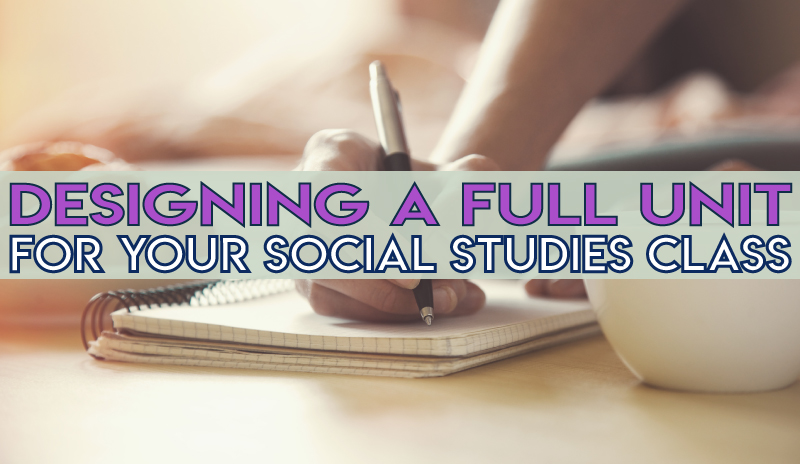I love designing units, however, it can be a bit daunting those new to the profession. Which standards should you cover? Which standards are okay to skip? How will you make this unit fun, creative, make sure your students learn, and think, and cover the content? It’s a lot to consider. Therefore, when I create a new unit, there are some rules I’ve developed over the years to make sure that the unit plan makes sense.
1. It’s a Matter of Time
My first task is to determine how much time I wish to devote to the particular unit. I have a good amount of autonomy in my classroom, so I can decide if I would rather spend one week or three weeks. Still, I do recognize the constraints of the space-time continuum, so I realize there are limits.
Honestly, sometimes I decide to spend more time because I enjoy a topic more, and I know that my students will also. I might also have a good activity that I want students to complete or a task I want them to practice. In contrast, there are some topics that I skip altogether. If I know that topic won’t be tested, and I know that my students won’t benefit from the content, I might just leave that topic untouched and breeze through the details as briefly as possible.
Hopefully, you have that level of autonomy also. If you don’t, look at the recent exams given that test your content. Determine what has been tested in recent years. Start there.
2. About the Standards
Review the standards you will need to address. From my own experience, I know that I will probably not be able to teach all of the standards. As I’ve discussed previously, I do skip some standards. You need to decide which standards are the most important for your class, and where you will focus your unit. The content you teach will be drawn from those standards.
3. Building Skills
Determine the skills you wish to address. As I’ve moved my content towards historical thinking skills, I know that each unit should have some measure of historical thinking. Because I teach middle school, I’m often introducing new historical thinking skills to students. With other units, I’m more focused on reinforcing those skills.
Even if historical thinking skills aren’t specifically addressed with your curriculum, I still think it’s important for all Social Studies or History teachers to focus on some level of critical thinking. We all need to teach our students to think about history. How will your students think about history within this unit?
4. How will your students be assessed?
Decide how you would like to assess students summatively. Of all the steps in unit planning, this is probably the most important. With some units, I might stick with a regular exam to see how students are growing in their content knowledge and historical thinking. With others, I push students to think more deeply. I might assign an inquiry essay or some type of project where students can demonstrate how they have grown in their understanding of history. Once I decide the type of assessment I then work backward to factor in the lessons that will lead them towards that path.
5. Pulling it all together
This point is the most fun! Now that I’ve figured out my map for the unit, I can start plugging in all the details. I love deciding on the simulations, games, or stations I might utilize to teach the unit. I also figure out how I will assess students along the way through formative assessments like exit tickets, bell ringers, or Google forms.
How do you design your units?


4 Responses
Thanks for this post. I found it when looking for ‘simulations’. How do you assess learning after a simulation? I know the power is in the debrief, but I have to enter PowerSchool grades (yuck!). I’m thinking I’ll have them reflect in their blog – I’d like it to not be onerous but still meaningful. For that, I thought a (tweaked?) visible thinking routine might work. Any thoughts?
Thanks again for sharing!
I have a separate assessment that includes the content from the simulation. That’s enough for my students!
When you say ‘separate assessment’ what does that look like? Or you mean that you have a traditional test that incorporates the whole unit?
It depends on the unit. In this unit it’s a test with historical thinking skill questions. The simulation is used to build content and the historical thinking skills are built throughout the year.